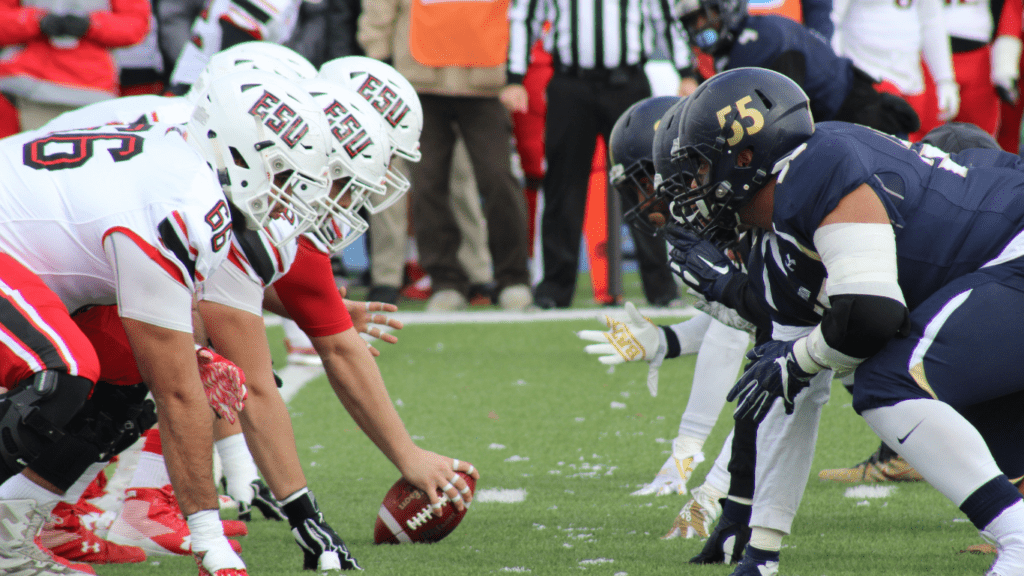As the NFL trade season heats up, excitement fills the air. Fans and analysts alike are glued to their screens, eager to see which players will don new colors and how these moves will impact the league.
Every trade sends ripples through team dynamics and reshapes playoff predictions, making it a thrilling time for everyone involved. I love diving into the nuances of trade speculation, especially as odds shift in real time.
With each rumor and announcement, the betting landscape evolves, sparking discussions about which teams are poised for success and which might struggle. Buckle up as we explore how these trades not only change team rosters but also influence the odds that can make or break a season.
Overview of NFL Trade Season
NFL trade season generates intense interest as teams consider adjustments to their rosters. Fans eagerly track player rumors and potential moves. Analysts assess the implications of trades for team strategies and performance.
Trade deadlines bring urgency, with teams forced to make timely decisions. Each transaction can reshape playoff outlooks and impact betting odds immediately. Bettors respond to shifts in rosters, often placing bets based on emerging talent or injuries.
Recent seasons illustrate the dynamic nature of trade speculation. With each rumor, the landscape changes, reflecting team needs and market conditions. Significant trades influence not only team chemistry but also strategies for future games.
Overall, NFL trade season captivates, as it signifies a critical juncture for franchises and fans alike.
Key Players on the Trade Block
The NFL trade season showcases a variety of players that can change the landscape of teams and betting odds. Key trade candidates include established stars and emerging talents, both capable of altering playoff trajectories.
Star Athletes to Watch
- Aaron Rodgers: With speculation about his future, Rodgers’ experience and skill make him a coveted asset for teams in need of a quarterback.
- Derek Carr: Carr’s recent performance has sparked interest among franchises seeking a reliable signal-caller to enhance their playoff chances.
- DeAndre Hopkins: As a top receiver, Hopkins holds significant value for teams looking to boost their passing game, especially if trading from a competing roster.
- Chris Godwin: Godwin’s versatility positions him as a desirable target for teams wanting to strengthen their receiving corps.
Emerging Talents
- Tua Tagovailoa: Following a strong season, Tagovailoa’s growth as a quarterback may prompt teams to explore trade options for him.
- Michael Pittman Jr.: With an impressive performance trajectory, Pittman’s potential could attract trade interest from teams needing a powerhouse receiver.
- Chase Claypool: Claypool’s unique skill set makes him a profitable investment for teams seeking to expand their offensive strategies.
- Trevor Lawrence: As a rising star, Lawrence’s ability to lead could inspire teams to consider trades to secure the next franchise quarterback.
Impact of Trades on Team Dynamics
Trades significantly influence team dynamics in both immediate and long-term contexts. Each transaction affects not only player performance but also team morale, chemistry, and strategic direction.
Short-Term vs. Long-Term Effects
Short-term effects arise quickly after a trade. New players can immediately boost a team’s competitive edge, enhancing their playoff prospects. Fan engagement often spikes as anticipation builds around the newcomer’s performance.
Conversely, long-term effects shape team identity and direction. Roster changes impact training strategies, player development, and salary cap allocations. Over time, integrating new players can lead to a more cohesive unit, but it may require adjustments in play styles.
Case Studies of Past Trades
Examining past trades reveals their profound effects on team dynamics.
| Trade Example | Teams Involved | Year | Impact |
|---|---|---|---|
| Khalil Mack to Bears | Raiders to Bears | 2018 | Strengthened Bears’ defense, leading to playoff appearance. |
| Odell Beckham Jr. to Browns | Giants to Browns | 2019 | Heightened expectations but led to inconsistent performance. |
| Matthew Stafford to Rams | Lions to Rams | 2021 | Transformed Rams’ offense, resulting in a Super Bowl win. |
These trades not only reshaped team strategies but also modified public perception and betting odds. Such case studies highlight how pivotal decisions during trade season can alter a franchise’s trajectory dramatically.
How Odds Are Calculated
Odds in the NFL, especially during trade season, are calculated based on a combination of several key factors.
- Player Performance: Statistical interpretations of a player’s career reflect on their potential impact. Metrics like yardage, touchdowns, and injury history bear weight on the odds.
- Team Dynamics: The collective strengths and weaknesses of a team influence how a trade affects their betting odds. Recent performance, roster depth, and coaching strategies interact to define competitive outlooks.
- Public Sentiment: Fan reactions and media narratives shape perception, influencing betting markets. As buzz grows around certain players or trades, oddsmakers adjust accordingly.
- Market Movement: As trades occur, oddsmakers react to changes in team composition and adjust lines. Rapid shifts in betting patterns signal potential value adjustments.
- Expert Analysis: Insight from analysts and industry insiders informs odds. Their assessments regarding trade viability and impact lend credence to shifting odds.
- Historical Data: Historical trends and past trade outcomes serve as benchmarks. Teams’ responses to similar trades in seasons gone by provide context for current odds.
Understanding how these elements combine provides insight into the fluctuating odds during the NFL trade season. Each trade can provoke immediate and substantial changes, reflecting a fluid betting landscape that mirrors the excitement of roster shifts.
Real-Time Odds Shifts During Trade Season
During the NFL trade season, real-time odds shifts capture the attention of bettors and analysts alike. Every trade impacts team dynamics and betting strategies, influencing the landscape in significant ways.
Understanding the Betting Market
The betting market reflects public sentiment and expert analysis surrounding player trades. Betting platforms adjust odds based on upcoming games, player performances, and team strategies.
I analyze these fluctuations to better understand the implications of trades. For instance, a significant player acquisition may elevate a team’s odds, showcasing increased confidence from bettors. Conversely, the loss of a key player often leads to lowered odds, indicating diminished expectations for the team’s success.
Key Factors Influencing Changes
Several key factors influence how odds change during trade season:
- Player Performance Metrics: Current player statistics, including yards gained and touchdowns scored, directly affect odds. Significant improvements or declines in performance cause immediate changes.
- Team Dynamics: The chemistry between players plays a vital role. Trades that enhance team cohesion can boost odds, while disruptive trades may lead to declines.
- Public Sentiment: Fan reactions influence odds as bettors often align their wagers with public perception. A highly publicized trade can swing odds in favor of the acquiring team.
- Market Movement: Betting lines shift as money flows in. I monitor how bettors respond to news, which often signals the market’s confidence in specific teams.
- Expert Analysis: Insights from analysts provide depth to odds fluctuations. Expert predictions can validate or challenge existing odds, often leading to recalibrations.
- Historical Data: Trends from past trades guide current estimations. Analyzing how similar trades impacted teams and odds in previous seasons offers valuable context.
These factors provide the foundation for understanding how trades influence betting lines and overall market stability during the trade season. Each trade’s impact reverberates throughout the NFL landscape, making the analysis during this period crucial for bettors.

 Jasonnick Chenlow is the founder of Wager Legend Zone, a platform dedicated to delivering expert betting news, odds analysis, and legendary wagering stories. With a deep understanding of sports betting strategy and a commitment to responsible play, Chenlow built the site to help bettors make smarter, data-informed decisions. His work combines analytics, storytelling, and bankroll guidance to elevate the betting experience for both novices and seasoned gamblers.
Jasonnick Chenlow is the founder of Wager Legend Zone, a platform dedicated to delivering expert betting news, odds analysis, and legendary wagering stories. With a deep understanding of sports betting strategy and a commitment to responsible play, Chenlow built the site to help bettors make smarter, data-informed decisions. His work combines analytics, storytelling, and bankroll guidance to elevate the betting experience for both novices and seasoned gamblers.